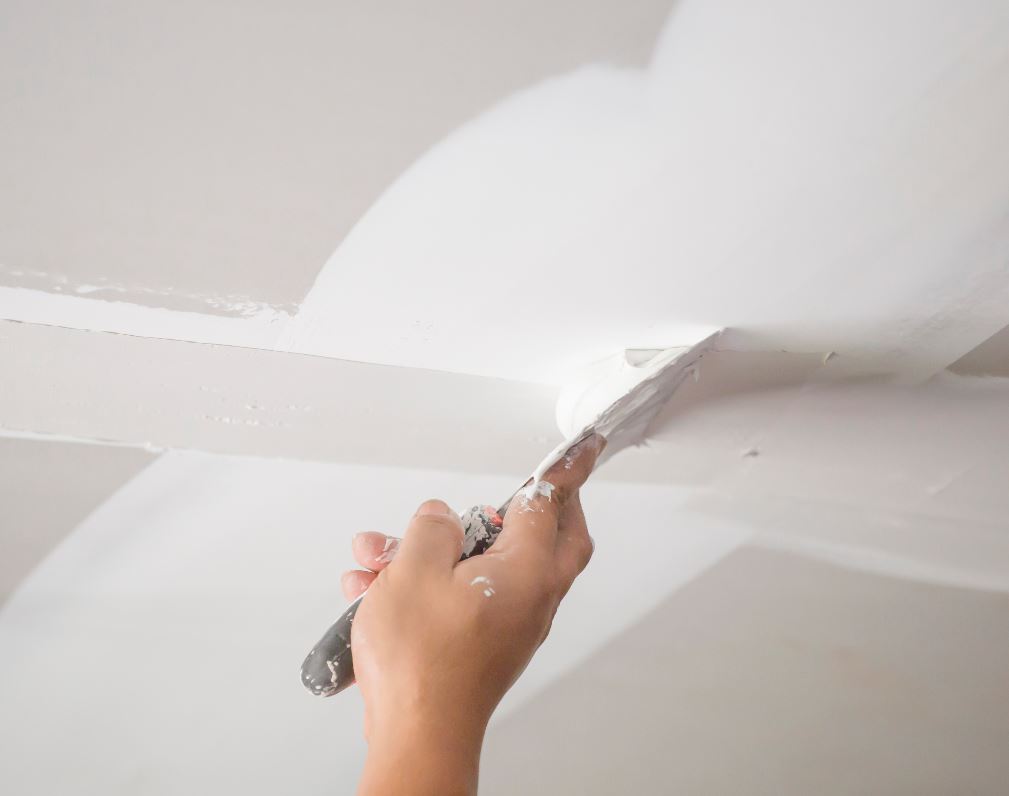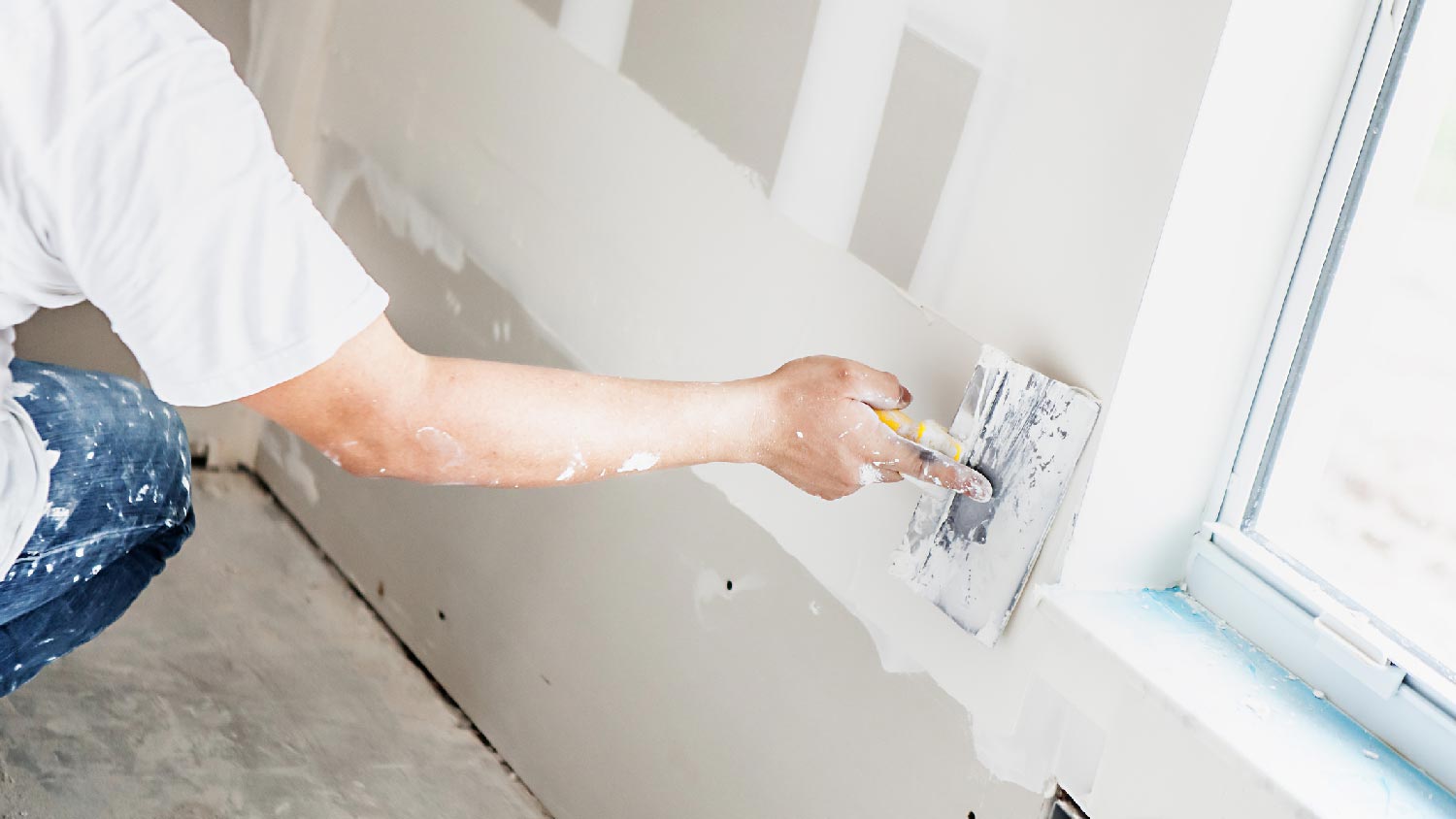A Comprehensive Overview to Mastering Drywall Repair Work and Installment
This guide provides a comprehensive expedition of drywall repair work and installment, providing to both novices and experienced experts. It outlines essential tools, strategies for patching and hanging sheets, and the crucial finishing procedures. Drywall Installation Ogden Utah. By comprehending usual pitfalls, individuals can accomplish refined outcomes. Mastering these skills not just enhances one's home but likewise constructs confidence in DIY endeavors. What foundational tips will assure an effective task from beginning to finish?
Vital Devices for Drywall Repair and Setup
When starting on drywall fixing and installment, a few vital tools can considerably improve the performance and top quality of the work. A drywall knife, commonly readily available in various sizes, is vital for using joint compound and smoothing joints. A taping knife is likewise necessary for feathering sides and ensuring a smooth coating. Additionally, a drywall saw or energy blade permits for accurate cutting of drywall sheets to fit any type of space.

Step-by-Step Guide to Patching Holes
Patching holes in drywall is a straightforward process that can restore the wall's appearance and integrity. To begin, the location around the opening need to be cleansed and any loose particles removed. For tiny openings, a basic spackle or joint compound can be applied with a putty blade. Larger openings may call for a spot; a piece of drywall can be reduced to fit the opening, protected with adhesive or screws, and then taped around the edges. When the patch is in area, joint substance is applied over the patch and feathered bent on blend with the surrounding wall surface. After the substance dries, fining sand is required to attain a smooth coating. Ultimately, the fixed area can be primed and painted to match the rest of the wall. This technique ensures a seamless repair work, enhancing the overall appearance of the drywall and keeping its architectural integrity.
Methods for Hanging Drywall Sheets
After effectively fixing openings in drywall, the next step includes hanging new drywall sheets to develop a seamless surface area. To accomplish this, one should begin by measuring the wall room accurately and cutting the drywall sheets to fit. It is essential to hang the sheets horizontally for far better architectural honesty, beginning with the top and functioning downwards.
Utilizing a drywall lift can simplify the procedure, specifically for ceiling installments. As soon as positioned, protecting the sheets with drywall screws at periods of concerning 12 inches along the sides and 16 inches in the area is vital. This assures a firm hold and minimizes the risk of drooping. For corners, the sheets must be reduced to fit snugly, allowing for cleaner joints. Lastly, click here it is advisable to startle the joints in between sheets to enhance the general structure, creating an extra sturdy coating prepared for the next phase in the drywall installment process.
Finishing Touches: Insulation and Mudding
Completing the drywall installment entails the crucial actions of mudding and taping, which assure a smooth and refined finish. Insulation needs the application of joint tape over the seams in between drywall sheets. Drywall Installation Ogden Utah. This tape can be either paper or fiberglass harmonize, with each kind offering special advantages. After taping, the next step is mudding, where joint substance, or "mud," is put on cover the tape and load any imperfections
Utilizing a drywall blade, the substance ought to be spread evenly, guaranteeing a feathered side to lessen noticeable modifications. Multiple layers are frequently essential, with fining sand in between each layer to achieve a seamless surface area. Cautious focus during this procedure is essential, as it considerably affects the last look of the wall. With the appropriate technique and persistence, completion outcome will certainly be a perfect foundation ready for painting or ending up touches.
Common Mistakes to Stay Clear Of in Drywall Projects

Another typical blunder is not allowing sufficient drying time in between coats, which can catch moisture and compromise the finish. In addition, neglecting to feather the sides appropriately can produce visible lines and imperfections. Missing sanding or using incorrect techniques might leave rough areas. By knowing these mistakes, individuals can greatly improve the quality of their drywall tasks and attain a professional-looking finish.
Often Asked Questions
Can I Fix Drywall Without Professional Help?
Yes, one can fix drywall without professional aid. With the right tools, products, and advice, people can efficiently manage small fixings. Nonetheless, considerable damage may require specialist knowledge for suitable results and toughness.
For How Long Does Drywall Compound Require To Dry?
Drywall compound normally takes in between 24 to 2 days to dry entirely, relying on factors such as humidity and temperature. Thinner layers might dry out faster, while thicker applications call for more time for ideal outcomes.
What's the most effective Kind Of Paint for Drywall?
The very best type of paint for drywall is commonly a water-based latex paint. It gives excellent coverage, toughness, and simplicity of application, making it perfect for interior walls while permitting for simple cleaning with soap and water.

Exactly how Do I Prevent Mold on Drywall?
To stop mold on drywall, assurance proper air flow, control humidity degrees, make use of mold-resistant products, and quickly address any leaks. Regular evaluations and prompt removal of water damage are also important for long-term avoidance.
Is Drywall Recyclable After Removal?
Drywall is recyclable after removal, supplied it is complimentary from contaminants like mold, paint, or other dangerous materials. Reusing facilities can refine it into brand-new items, promoting sustainability and lowering land fill waste in building and construction.
When starting on drywall fixing and setup, a few essential devices can considerably boost the effectiveness and top quality of the job. After efficiently repairing openings in drywall, the next action involves hanging new drywall sheets to develop a smooth surface area. Finishing the drywall installation includes the vital steps of taping and mudding, which guarantee a smooth and polished finish. Attaining a sleek surface in drywall jobs can be difficult, and a number of typical mistakes can undermine the high quality of the work. Yes, one can fix drywall without specialist help.